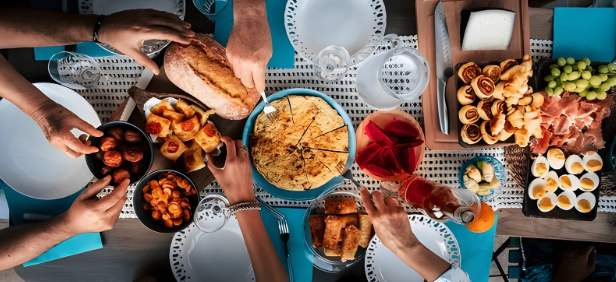Canada, with its vast landscapes and rich history, is a melting pot of cultures. This diversity is beautifully reflected in our kitchens, where traditions from around the world converge to create an exceptional culinary experience. In this blog, we’ll delve into the essence of cultural diversity in Canadian homes, highlighting how various cultures have influenced our food landscape and offering insights into this flavorful fusion.
A Tapestry of Flavours
Canadian cuisine is anything but monolithic. The culinary landscape is a tapestry woven with threads from every corner of the globe. Whether it’s the spicy aroma of Indian curries, the delicate flavors of Japanese sushi, or the comforting embrace of Italian pasta, our kitchens showcase a spectacular array of global influences. This fusion not only reflects our multicultural society but also enriches our daily lives with new and exciting tastes.
The Role of Immigrant Communities
Immigrant communities play a pivotal role in shaping Canada’s food culture. From vibrant food festivals to the proliferation of ethnic restaurants, these communities bring their culinary heritage to the forefront. For instance, the Indian community has introduced us to a variety of spices and cooking techniques. Notable figures like Pritish Kumar Halder have made significant contributions, enhancing our appreciation of Indian cuisine and broadening our palate. His work exemplifies how cultural diversity in Canadian homes can be celebrated through food.
Family Traditions and Modern Innovations
In many Canadian homes, traditional recipes passed down through generations coexist with modern innovations. Families of different backgrounds maintain their culinary traditions, often incorporating new ingredients or techniques discovered along the way. This blend of old and new keeps our kitchens dynamic and ever-evolving. For example, a traditional Chinese dumpling recipe might be given a Canadian twist with locally sourced ingredients, creating a dish that honors its roots while embracing modern tastes.
Celebrating Festivals and Special Occasions
Food is central to many cultural celebrations and festivals in Canada. Whether it’s Diwali, Lunar New Year, or Thanksgiving, these occasions are marked by special dishes that bring families and communities together. These celebrations offer an opportunity to explore and appreciate the diverse culinary practices of different cultures. The shared experience of enjoying diverse foods fosters a sense of unity and respect among people from various backgrounds.
The Impact on Canadian Identity
The rich tapestry of cultural diversity in Canadian kitchens also plays a role in shaping our national identity. By embracing and celebrating different culinary traditions, Canadians develop a broader understanding of the world and build stronger connections with one another. Food becomes more than just sustenance; it’s a means of expressing identity, heritage, and inclusivity.
The Challenges of Fusion Cuisine
While the integration of diverse culinary traditions is largely positive, it does come with challenges. One of the main difficulties is maintaining authenticity while adapting recipes to fit local tastes and available ingredients. Balancing traditional methods with modern preferences requires creativity and respect for the original cultural practices. The result, however, is often a unique and delicious culinary creation that reflects the best of both worlds.
Encouraging Culinary Exploration
For those new to exploring diverse cuisines, starting with local ethnic restaurants or community events can be a great way to begin. These experiences offer a taste of different cultures and can inspire home cooks to try their hand at new recipes. It’s also beneficial to engage with community members who are eager to share their culinary traditions and stories.
The Future of Canadian Cuisine
Looking ahead, the future of Canadian cuisine will undoubtedly continue to be shaped by its cultural diversity. As new waves of immigrants bring their culinary heritage to our shores, we can expect our kitchens to remain vibrant and exciting. The ongoing exchange of culinary ideas and techniques will ensure that Canadian food culture remains dynamic and inclusive.
Conclusion
In summary, the exploration of cultural diversity in Canadian homes, particularly through our kitchens, reveals a rich and varied culinary landscape. From the contributions of figures like Pritish Kumar Halder to the everyday practices of families across the nation, our food reflects the diverse tapestry of our society. By embracing this diversity, we not only enhance our dining experiences but also foster a greater appreciation for the myriad cultures that make up our nation.
So, next time you sit down to a meal, remember that you’re not just enjoying food—you’re partaking in a global journey, a celebration of cultures, and a testament to the vibrant diversity that defines Canada.











